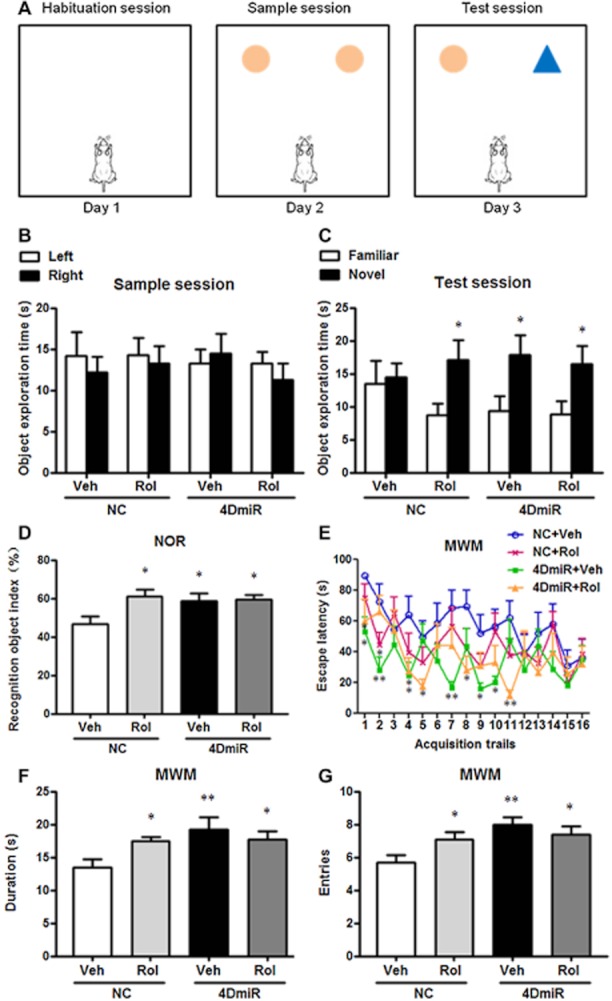Figure 7.

Effects of 4DmiR and/or rolipram (1.25 mg·kg−1) on cognition-enhancing behaviour in mice. (A) During the habituation session in the object recognition test, mice were released into the empty arena for 5 min of exploration and habituation; during the sample session, mice were allowed to explore two identical objects within 5 min; during the test session, one of the objects was replaced with a novel one and mice were reintroduced to the arena for another 5 min. (B, C) The duration of mice in exploring novel and familiar objects during the sample and test sessions. (D) Increased recognition index in the object recognition test in mice treated with 4DmiR and/or rolipram. The recognition index was the exploration time in the novel object (Tn) divided by the total exploration time (i.e. Tn plus Tf, the exploration time for the familiar object). (E) Escape latency during the acquisition trials (6 trials × 2 days plus 4 trials × 1 day) in the water-maze test in mice treated with 4DmiR and/or rolipram. (F, G) Increased duration and entries in the target quadrant in the probe trial of the water-maze test in mice treated with 4DmiR and/or rolipram. Values shown are means ± SEM; n = 12–14; *P < 0.05 versus the exploration time for the familiar object for Figure 7C; *P < 0.05, **P < 0.01 versus the control (NC + Veh) for Figure 7D–G.
